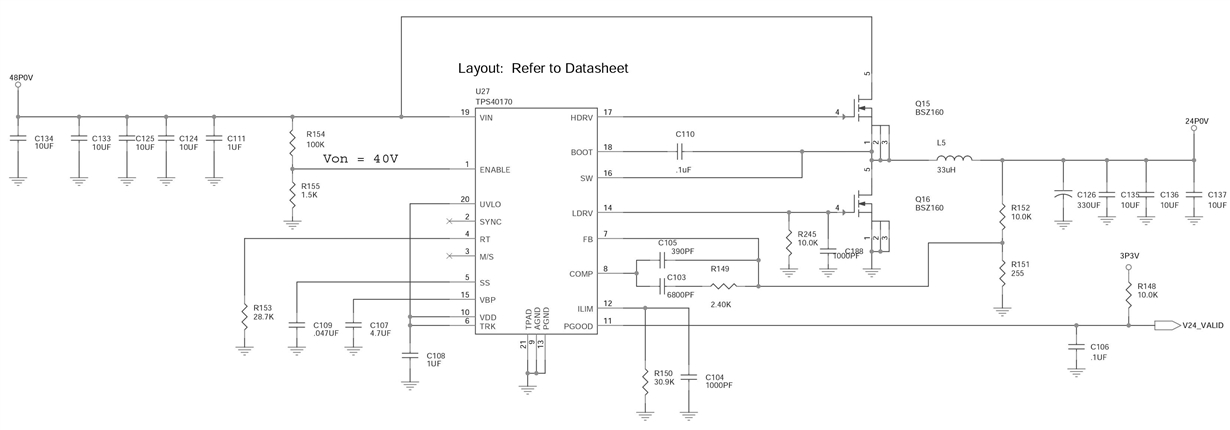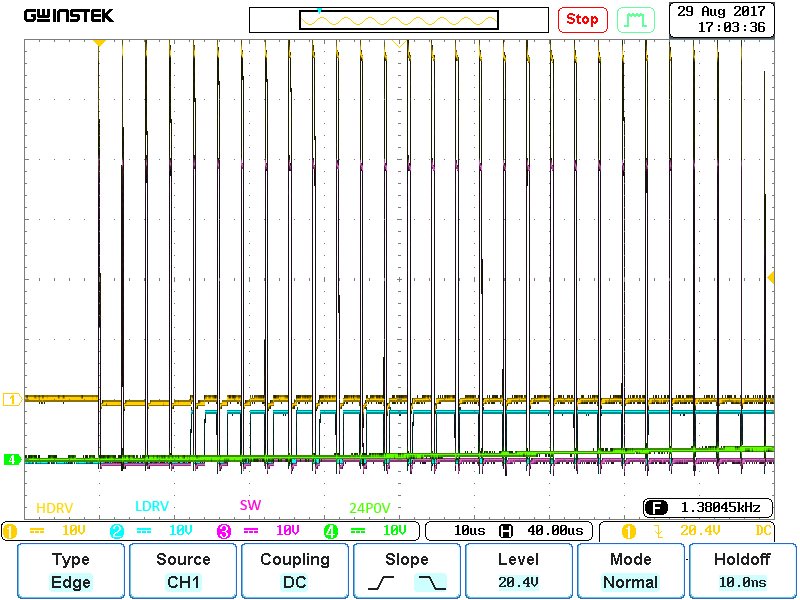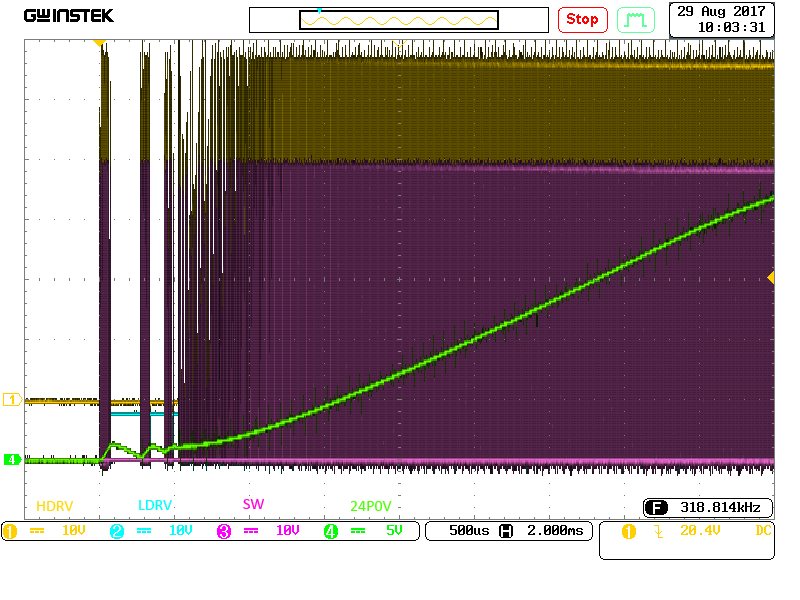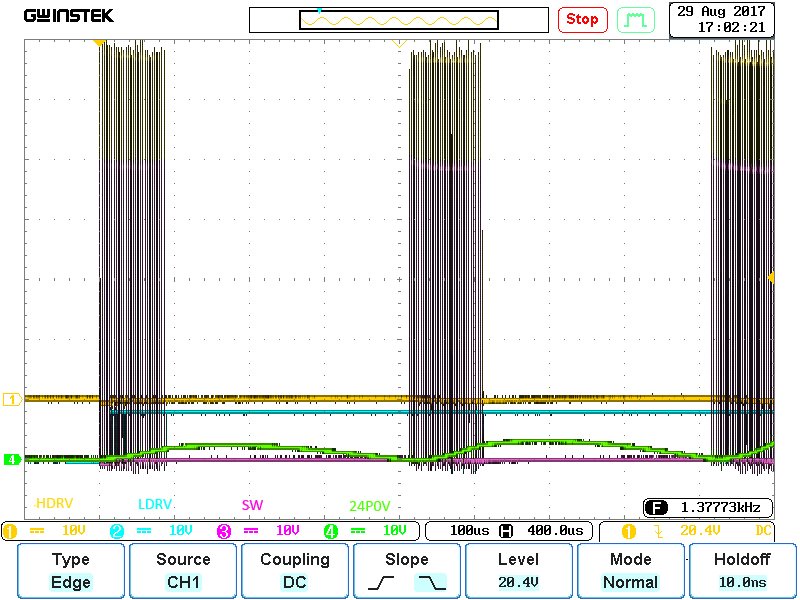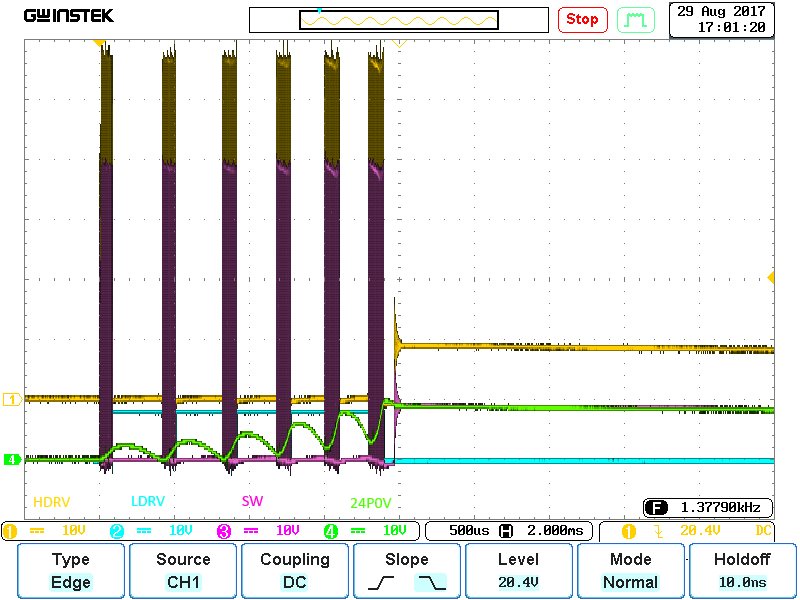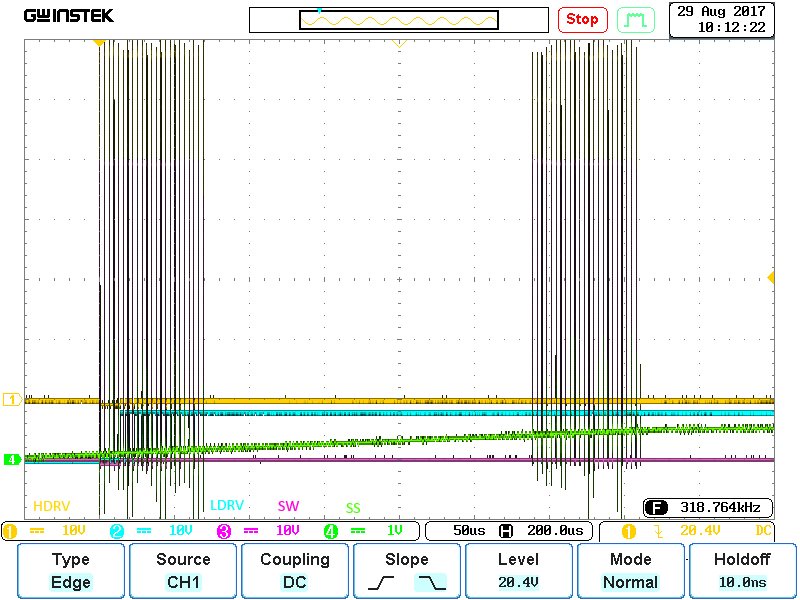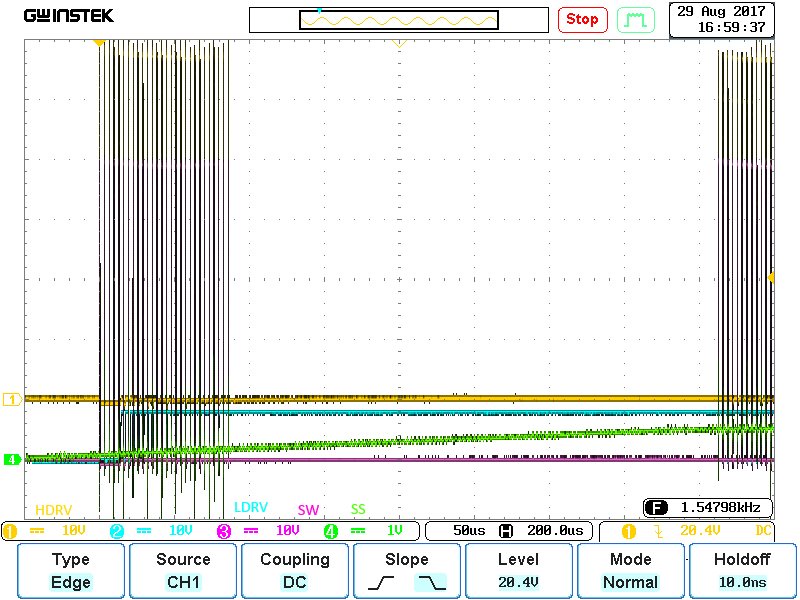We have been using a TPS40170 Switching Power Supply circuit for several years, 100's of boards, with no problems. We just started using the first (14) boards from our first batch of new 2017-manufacture boards and the TPS40170 power supply circuits are failing. We have regulated 48VDC (Off-the-shelf 1,000 watt Cosel Power Supply) providing the input power, the output voltage is 24VDC @ 5A, 300kHz switching frequency. We are only running with a 200mA load right now. The TPS40170 chips used in the failing circuits all have a 65K date code (May 2016?). We believe the passives are the correct values, but some of them cannot be accurately measured in circuit.
The failure mode is that when we first power up the boards, the 24VDC output fluctuates from 4 - 6VDC. We can disable the ENABLE line and then enable it and the circuit behaves the same. We have captured many waveforms of an operational board and a failing board and noticed some differences. All waveforms are triggered by the rising edge of the first HDRV signal. We have not been able to locate any TI documentation that goes into fine enough detail on the power-up operation of the TPS40170, so we are hoping to get an expert who can help us understand what exactly we are seeing.
We are not debugging a new design, but a new build of a design that has been working on 100's of boards before this first 2017-manufactured batch. We are hoping that the information below will mean something to a TI expert. It does not look like the circuit has excessive noise, as it will almost work if we use a bench supply and slowly increase the input voltage, but it is unstable. The old boards are rock solid in operation.
SCHEMATIC
1) On the GOOD board, when the FET drivers (HDRV and LDRV signals) first start up, there is a burst of 23 HDRV pulses at 300kHz on the GOOD board. There are 28 or 29 pulses in the BAD board.
GOOD Board HDRV LDRV SW 24P0V Signals (10us/div)
BAD Board HDRV LDRV SW 24P0V Signals (10us/div)
2) On the GOOD board, after the FET drivers (HDRV and LDRV signals) have started up, there is a spacing of approximately 200us between the first burst of pulses and 2nd burst, and then only approximately 100us between the 2nd and 3rd burst of pulses, then 50us between the 3rd and 4th bursts, then the pulses are continuous and the 24P0V signal rises up to 24V in about 4.5ms. On the BAD board, there is approximately 300us (a little less as the bursts continue) between bursts of pulses between the 1st and 2nd and 3rd and 4th bursts, then approximately 200us between the 4th and 5th and 6th bursts, then the bursts stop. Also, the 24V reaches almost 10V and then starts to drop.
GOOD Board HDRV LDRV SW 24P0V Signals (100us/div)
GOOD Board HDRV LDRV SW 24P0V Signals (500us/div)
BAD Board HDRV LDRV SW 24P0V Signals (100us/div)
BAD Board HDRV LDRV SW 24P0V Signals (500us/div)
Thanks for any help you folks can provide.


